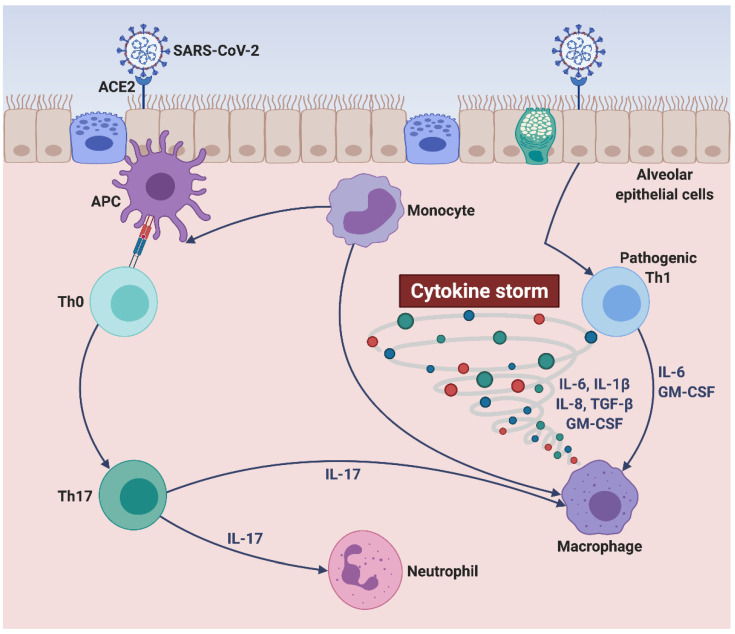Figure 1.
SARS-CoV-2-induced cytokine storm. SARS-CoV-2 targets alveolar epithelial cells, binds to their ACE2 receptors, and penetrates inside lung tissue, thus reaching subepithelial antigen-presenting cells. The latter can drive the differentiation of unpolarized naïve T cells into mature Th17 lymphocytes producing IL-17, leading to neutrophil recruitment and macrophage activation. Moreover, upon their interactions with SARS-CoV-2, infected alveolar epithelial cells can trigger the activation of pathogenic Th1 cells and monocytes/macrophages, which release large quantities of proinflammatory cytokines (IL-6, GM-CSF, IL-1β, TGF-β) and chemokines (IL-8). Within such a cytokine/chemokine milieu (cytokine storm), monocytes can undergo further cellular differentiation towards either alveolar macrophage phenotype or antigen-presenting cell lineage. This original figure was created by the authors using BioRender.com. SARS-CoV-2: severe acute respiratory syndrome coronavirus-2; ACE2: angiotensin-converting enzyme 2; APC: antigen-presenting cell; Th0: unpolarized naïve T helper cell; Th1: T helper 1 cell; Th17: T helper 17 cell; IL-1β: interleukin-1β; IL-6: interleukin-6; IL-8: interleukin-8; IL-17: interleukin-17; GM-CSF: granulocyte-macrophage colony-stimulating factor; TGF-β: transforming growth factor-β.

